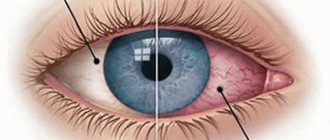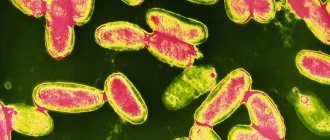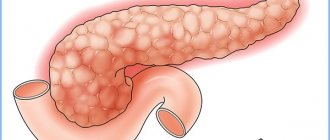Mumps is an inflammation of one or both parotid glands (large salivary glands located on both sides of the face in people). The causes can be different and are divided into infectious (caused by bacteria or viruses) and non-infectious (injuries, dehydration, hypothermia, gland blockage). Also, mumps can develop against the background of other diseases, including some autoimmune diseases, sialadenosis, sarcoidosis, pneumopathitis, or be nonspecific, i.e. have no specific reason.
General information
Mumps (or mumps ) is an acute viral disease that develops as a result of exposure to the human body by paramyxovirus . When the disease occurs, severe fever , general intoxication of the body occurs, and one or more salivary glands enlarge. Often with mumps, other organs are affected, and damage to the central nervous system is also possible. This disease was first described by Hippocrates.
Possible complications and consequences of mumps
Despite the fact that mumps is not a serious disease, it can cause serious complications. If the patient's condition worsens, orchitis (in men), mastitis (in women), encephalitis may occur, and in the worst case, irreversible deafness and infertility develop. An equally serious complication of mumps is meningitis, in which the disease is extremely severe and recovery does not take a long time. Various tissues and organs (ovaries, mammary glands, pancreas) are affected by the virus.
Causes of mumps
Symptoms of mumps appear in humans due to exposure to a virus from the paramyxovirus group. You can only become infected from a person who is sick with a manifest or inapparent form of mumps. A person becomes infectious to others 1-2 days before the first clinical symptoms of mumps disease appear, as well as in the first five days of the disease. After the symptoms of the disease disappear, the person becomes non-infectious. Transmission of the virus in adults and children occurs through airborne droplets. However, to this day, experts do not exclude the possibility of transmission of the virus through contaminated objects. People are highly susceptible to infection. The virus enters the body through the mucous membrane of the upper respiratory tract.
Most often, the disease affects children, and males suffer from mumps about one and a half times more often. Mumps most often develops in children between 3 and 7 years of age. In general, about 90% of cases of the disease are diagnosed in children and adolescents who are under 15 years of age. Most often, the virus affects people in the spring – in March and April. The lowest number of cases of the disease is observed in August and September. The disease can be either sporadic or manifest as epidemic outbreaks. The overall incidence rate was reduced after the practice of mass immunization of the population with a live vaccine became common. Once a person has had mumps, they develop lifelong immunity to the disease.
Mumps in children
The incubation period for mumps infection lasts from 12 to 26 days. In rare cases, it can last a minimum of 9 days, a maximum of 26 days.
Clinical manifestations depend on the form of the disease. The most common manifestation of mumps is damage to the parotid glands . The disease usually has an acute onset, accompanied by a rise in temperature to 38-39 °C. If cases of the disease are mild, then the temperature is normal or slightly elevated. The level of temperature in the following days depends on how widespread the infectious process is. The temperature curve has a wave-like character (it rises and then decreases). The temperature rises when the infection attacks other salivary glands or organs. Along with the temperature, symptoms of intoxication begin to appear. The child develops headaches and muscle pain, malaise, and loss of appetite. Young children become capricious. Parents observe sleep disturbances.
Among the first symptoms of mumps in children is pain in the area of the parotid salivary gland, which intensifies with chewing and talking. By the end of the first day or at the beginning of the second day (less often), an increase in the parotid salivary glands is observed. At first, the process concerns only one party. The second side is affected after 1-2 days. A swelling is visible in front of the ear, which descends along the ascending branch of the lower jaw and behind the auricle, lifting it up and out.
But the increase cannot always be determined visually; sometimes this requires palpation. Doctors note the softness or doughy structure of the salivary gland upon palpation. Pain occurs on palpation. According to N.F. Filatov, the following painful points are identified: in front of the earlobe, in the area of the apex of the mastoid process and in the place of the mandibular notch.
Within 2-4 days, the parotid glands enlarge. After this, the sizes gradually return to normal. Together with the parotid or after them, the submandibular (submaxillitis) and sublingual (sublingual) salivary glands are subject to the process.
In every 4th patient with mumps, inflammation of the submandibular gland (so-called submaxillitis) is observed. Most often it is accompanied by damage to the parotid salivary glands. It almost never appears at the onset of the disease.
Severe forms of the disease can cause tissue swelling to appear in the gland area and spread to the neck. sublingual inflammation occurs - an isolated lesion of the sublingual salivary gland. In this case, a swelling appears under the patient's tongue. The affected glands are usually enlarged for 5 to 7 days. Then the pain disappears and the swelling subsides. Inflammation ends on the 8-10th day of illness. But there are cases when the glands are inflamed for 2-3 weeks. The temperature periodically rises and falls again.
Damage to the genital organs due to mumps infection
The virus can attack the testicles, ovaries, prostate gland, and mammary glands. Teenagers are susceptible to orchitis (25 cases out of 100). Orchitis leads to persistent dysfunction of the testicles, which means to male infertility in the future. In those who have had orchitis, spermatogenesis is impaired (about 50% of those who have recovered from the disease), and in 1/3 of those who have recovered from the disease, signs of testicular atrophy are recorded. 1-2 weeks after the onset of inflammatory processes in the salivary glands, orchitis may begin to appear. But it happens that mumps infection has a primary localization in the testicles.
Inflammation of the testicles appears due to infection on the epithelium of the seminiferous tubules. Pain receptors are irritated, which leads to pain. The pressure inside the tubules increases, and this threatens to disrupt the microcirculation and functionality of the organ.
One of the initial symptoms of orchitis with mumps is an increase in temperature to 38-39 °C. Often a sick child feels chills. Symptoms of intoxication appear immediately - weakness, intense pain in the groin (attempts to walk cause more severe pain), headache. Localization of pain occurs mostly in the scrotum and testicles. The testicle enlarges and becomes denser. Palpation leads to increasing pain. Reddish vessels filled with blood are visible on the skin of the scrotum, and the skin may also acquire a bluish tint.
The process does not always extend to 2 testicles. The swelling lasts for 5 to 7 days, then begins to subside. After 1-2 months, signs of atrophy are revealed, the testicle decreases in size and becomes softer.
A rare form of mumps is thyroiditis . It usually manifests itself as an enlarged thyroid gland, fever, pain in the neck and tachycardia.
Damage to the lacrimal gland also occurs - dacryoadenitis, which manifests itself as pain in the eyes and swelling of the eyelids.
Damage to the nervous system
Very rarely, central nervous system damage is the only manifestation of mumps. Often the nervous system is affected by infection after the glands. If damage to the central nervous system is the only manifestation, then the salivary glands are almost untouched by the virus and do not hurt. Clinically, the disease manifests itself as meningoencephalitis, serous meningitis, and in rare cases, neuritis or polyradiculoneuritis.
Serous meningitis is most often recorded on the 7-10th day of illness after the symptoms of mumps infection begin to appear less or disappear.
Mumps meningitis has an acute onset and increased body temperature. The patient develops headaches and repeated vomiting. Young children are sleepy and lethargic. In rare cases, on the contrary, agitation, as well as convulsions and delirium, may be observed. From the first days of the disease, meningeal syndrome appears, which manifests itself as positive Kernig, Brudzinsky symptoms (appear as a result of irritation of the meninges, hemorrhage under the membranes). If the forms of the disease are mild, then the meningeal signs are weakly expressed (may be absent). The disease has the following manifestations: single vomiting, headache, slightly elevated temperature. The final diagnosis of mumps meningitis is made based on the results of a spinal puncture.
In some cases, meningitis with mumps can be combined with encephalitis (so-called meningoencephalitis). Cerebral symptoms in such cases occur simultaneously with meningeal symptoms or after two to three days. Clinical manifestations of meningitis include: repeated vomiting, severe headaches, delirium, impaired consciousness, and convulsions. Pathological reflexes and hyperkinesis are also likely. Usually the course of the disease is favorable. Clinical symptoms subside after 3-5 days. The symptoms of meningitis disappear after a week (maximum after 10 days). Cerebrospinal fluid normalizes slowly, changes in it can persist for up to 3-5 weeks.
The healing process may be delayed in some cases (rarely). In such cases, psychosensory disorders persist for a long time, which manifest themselves in decreased memory, increased fatigue, headaches and areflexia (absence of one or more reflexes).
Neuritis and polyradiculoneuritis are rare with mumps infection. When the parotid gland suddenly enlarges, it can lead to compression of the facial nerve, leading to paralysis. In this case, on the side of the affected facial nerve, the function of the facial muscles is impaired: the eyebrow is slightly lowered, the folds of the forehead are smoothed (as well as the nasolabial fold), the palpebral fissure does not close.
In case of mumps infection, lesions of the cochlear nerve with hearing loss have been described.
With mumps, mumps pancreatitis can develop , combined with damage to other organs. The frequency of pancreatitis, as far as can be judged from the specialized medical literature, ranges from 3% to 72%. The diagnosis of pancreatitis is established only by increasing the level of amylase in the blood.
With mumps, pancreatitis, as is correct, occurs 5-9 days after the onset of the disease. Pancreatitis is the only manifestation of the disease in very rare cases.
Mumps pancreatitis in typical cases has an acute onset, manifested by pain. Abdominal pain ranges from mild to very severe. The pain is felt in the epigastric region, left hypochondrium, sometimes it is encircling and radiates to the back, right hypochondrium. In addition to pain, nausea and vomiting also often occur, colds become more frequent, and body temperature rises. When palpating the abdomen, pain and bloating are noted.
A blood test at the height of the disease shows an increased amount of amylase, lipase, and trypsin. Diastase activity is increased in urine. Stool analysis shows a significant increase in the amount of unchanged muscle fibers, fatty acids and extracellular starch. Changes in peripheral blood are not typical.
The course of mumps pancreatitis is favorable. Symptoms begin to subside 10-12 days after the onset of symptoms. First, the pain disappears, then the patient’s well-being gradually improves. But pancreatic function is restored only in the third or fourth week from the onset of the disease.
Symptoms
When infected with mumps, the incubation period ranges from 11 to 23 days, but most often it lasts 15-19 days. Some patients note that approximately 1-2 days before the onset of the first symptoms they experienced prodromal phenomena: slight chills, headache, muscle pain, dry mouth, and discomfort in the salivary glands.
As a rule, mumps in children and adults begins acutely. Initially, a person is worried about chills, his temperature rises significantly. As the disease develops, fever may persist for about 1 week. In this case, the patient suffers from headache, weakness, and insomnia . To reduce such manifestations, symptomatic treatment is practiced. But sometimes the symptoms of mumps in children and adult patients appear at normal body temperature. The main symptoms of mumps are inflammation of the salivary glands. As a rule, the parotid glands are affected, however, sometimes the submandibular and sublingual salivary glands become inflamed. They are painful on palpation, as well as swelling.
In the presence of a pronounced enlargement of the parotid salivary gland, the contours of the face change: it becomes pear-shaped. On the affected side, the earlobe rises, the skin on the swelling becomes stretched and shiny, but its color does not change. Most often, bilateral lesions are observed, but unilateral lesions also occur.
The patient experiences a feeling of discomfort. There is tension and pain in the area near the ear, which gets worse at night. If the tumor compresses the Eustachian tube, then noise and pain may appear in the ears. so-called Filatov's symptom - severe pain when pressing behind the earlobe. This symptom is considered one of the earliest and most important signs of mumps.
Sometimes pain prevents the patient from chewing food. Hearing loss and dry mouth may occur. The pain subsides by the end of the first week of the disease. Also at this time, the swelling of the salivary glands gradually disappears.
Mumps in adult patients manifests itself with more pronounced symptoms. Sometimes patients are bothered by catarrhal and dyspeptic symptoms, and the acute period of the disease is more severe than in children. The swelling may spread to the neck and lasts longer - about two weeks. Such signs are easy to identify both visually and from photographs.
Treatment of mumps at home: what is first aid?
Many parents are concerned about the question - what to do if their child shows signs of mumps? Is it possible to treat children at home on your own, and is it necessary to show children to a doctor? Adults who themselves are faced with the disease also cannot always clearly answer the question of whether they should visit a clinic or call a doctor home for an examination.
In fact, seeing a doctor is mandatory for a patient with mumps of any age. The disease does not always occur with open manifestation of symptoms, and not in every case the patient can understand that he is experiencing dangerous complications.
First aid at the first symptoms of the disease can determine the severity of its further course. What are the principles of treatment at the first signs of mumps?
The patient must be provided with rest and bed rest. It is impossible to carry the disease on your feet - firstly, this significantly increases the risk of complications, and secondly, the infected person will infect everyone around him. Quarantine for a sick person lasts up to 10 days - during this period children cannot attend kindergarten or school, adults cannot go to work or any public events. If the patient has severe pain in the inflamed glands, as well as manifestations of fever and high temperature, antipyretic and anti-inflammatory drugs (Paracetamol, Ibuprofen, Nurofen, Panadol), antihistamines (Claritin, Suprastin), multivitamin complexes (Biomax, Complivit) are prescribed.
In severe cases with severe intoxication of the body, intravenous detoxification therapy is performed (saline solution, 5% glucose solution). This treatment is usually carried out in a hospital.
From the first day, when the symptoms of the disease began to actively manifest themselves, the patient is recommended to eat according to the therapeutic diet No. 5 according to Pevzner, which is relevant for people with pancreatitis - this is necessary in order to reduce the risk of developing this disease. Sometimes it is necessary to pre-grind food in order to reduce pain when chewing. It is recommended to drink plenty of warm drinks (fruit drinks, rosehip infusion, weak tea). The diet lasts for 3-4 weeks from the moment of the first manifestation of the disease, bed rest must be observed for 10-12 days until recovery occurs. Approximately 75% of infected people who did not adhere to these requirements developed complications of mumps.
The patient is prohibited from consuming:
- meat, fish, mushroom broths;
- fatty meats, fish, poultry;
- fatty dairy products;
- radish, sorrel, radish, onion, garlic, fresh cabbage;
- smoked meats;
- milk;
- pickled products;
- spicy, fried, fatty, salty foods;
- alcohol and coffee;
- chocolate, fresh pastries, biscuits.
The menu may contain cereals (except corn), pasta, lean boiled or baked meat, fish, steamed vegetables, low-fat fermented milk products, no more than 1 egg per week, biscuits, homemade compotes, weak tea, marmalade, marshmallows, honey, marshmallow.
It is important to maintain oral hygiene - in addition to regular brushing of teeth, which, by the way, can be very painful during the acute period, the infected person needs to rinse the mouth 2-3 times a day with disinfectant solutions. An aqueous solution of chlorhexidine is suitable for these purposes - of course, it does not taste the most pleasant, but it has good bactericidal properties.
There is no treatment aimed directly at the pathogen. The specific hyperimmune serum, which was previously used for patients, did not give the desired effect and did not have a positive effect on the likelihood of complications.
Diagnostics
Diagnosis of mumps when typical symptoms appear is not difficult for a specialist. In other infectious diseases, the damage to the parotid salivary glands is secondary, and it is also purulent. But upon careful examination of the patient, the doctor can easily differentiate other diseases.
Laboratory methods are used to determine the presence of the virus in the body. The most informative is the isolation of the mumps virus from the blood. It is also found in other liquids - pharyngeal swabs, secretions of the parotid salivary gland, and urine.
Immunofluorescence methods are used to detect viruses in cell culture after 2-3 days. At the same time, standard methods determine the presence of the virus only after 6 days.
Treatment of the disease
As a rule, in the normal course of mumps, an adult patient is not prescribed injections or taking strong drugs. However, if complications develop, the doctor may prescribe serious therapy. Those infected with mumps are advised to stay in bed, drink plenty of fluids and rinse the mouth regularly. To reduce pain, hot and cold compresses or analgesics are prescribed. If mumps is detected in an adult at an early stage, the doctor prescribes gamma globulin to alleviate the condition.
Treatment for mumps is usually carried out at home. Only seriously ill people are hospitalized. At the initial stage of the disease, standard methods of therapy are used: taking antibiotics, following a diet, and performing hygiene procedures. Suppuration requires urgent surgery, during which salivary stones are removed, and the source of inflammation is incised and drained. After suffering purulent or catarrhal parotitis, the salivary gland completely restores its functions.
- Hydrocephalus in a child: treatment and consequences
- Enlarged mammary glands in men - causes, treatment without surgery and indications for surgery
- The first signs of meningitis in a child - types of diseases, manifestations and treatment
Prevention
To prevent mumps in children and adults, the only effective method of prevention is vaccination. Mumps vaccination is given to children aged 12 to 15 months (according to the vaccination calendar). At 6 years of age, revaccination is carried out. The vaccine is injected either into the outer surface of the shoulder or subcutaneously under the shoulder blade. If a child who has not previously had mumps has had contact with someone who has symptoms of mumps, they can be immediately vaccinated with the mumps vaccine. Mumps, as well as measles and rubella, are prevented by mandatory vaccination due to the high likelihood of complications. There are no direct contraindications to vaccination with the mumps vaccine.
A child who has received a mumps vaccine according to the vaccination schedule may become ill with this disease. However, mumps after vaccination occurs only in a mild form. In addition, the virus from such a person is not released into the environment, therefore, such a patient is not infectious to others.
To prevent infection with the virus during pregnancy , a woman, even at the planning stage, must be tested to determine antibodies to mumps. If antibodies are present in the body, this indicates that a woman who plans to become a mother has immunity to mumps. In the absence of such antibodies, it is necessary to vaccinate against mumps before pregnancy.
Prevention of mumps
Thanks to vaccination, mumps almost never occurs today.
Mumps is a so-called controlled infection. Thanks to preventive vaccination, which began in the mid-60s, the incidence of mumps has decreased significantly. The vaccine is given to children over one year of age, often in combination with rubella and measles. The vaccine is very effective and almost never causes general or local reactions. It is possible to carry out emergency vaccination if a case of mumps is detected in a team, but using the vaccine on a sick person will not be effective.
In order to avoid contracting mumps, it is necessary to avoid contact with a sick person.
Complications
With mumps, the most common complications are damage to the glandular organs and the central nervous system. Mumps disease in children is most often complicated by serous meningitis , and meningitis develops three times more often in men than in women. Consequences in the form of damage to the central nervous system appear in most cases after damage to the salivary glands. But sometimes there is a simultaneous development of mumps and damage to the nervous system. In addition to signs of meningitis, some patients also show symptoms of encephalitis .
Another complication of mumps is orchitis . It is more often observed in adult patients. Symptoms of orchitis appear on the 5th-7th day of mumps: repeated fever, severe pain in the testicles and scrotum, and enlarged testicles are noted. Immediate treatment for this condition is required, otherwise testicular atrophy . The childhood disease mumps can provoke in adults not only mumps orchitis, but also its further complication - priapism (prolonged erection of the penis, not associated with arousal).
But the situation is especially dangerous when mumps develops in boys during adolescence. Signs of mumps disease are sometimes manifested by the development of inflammation of the testicle or ovary. As a result, approximately every tenth boy who suffered from mumps in childhood experiences infertility .
acute pancreatitis may develop after mumps , the signs of which are observed on the 4-7th day of the disease. Arthritis also appears in some cases . A serious complication of the disease can be complete deafness. Mumps in pregnant women can cause fetal abnormalities. As a rule, such children have heart damage. If the disease develops in a woman or girl, damage to the ovaries and mammary glands may occur as complications.
Treatment of mumps with folk remedies
Traditional medicine is aimed at easing the course of mumps and strengthening the immune system, which will speed up recovery. Warm compresses and ointments based on medicinal herbs help relieve unpleasant symptoms, relieve pain, reduce inflammation and swelling. Infusions and decoctions of medicinal herbs help avoid complications and neutralize infection. You can also use folk remedies for rinsing the mouth to disinfect and alleviate the patient’s condition. All these methods should be used in combination with classical therapy prescribed by a doctor.
Linden blossom infusion
To make a medicinal infusion based on linden flowers, you need to brew 1 tablespoon of finely chopped raw materials in 200 ml of boiling water. Cover this product with a lid and leave to infuse for about a quarter of an hour in a warm place. After this, the liquid is filtered and consumed as a medicine for mumps, a third of a glass 3 times a day. You can also mix linden flowers, elderberries, sage and raspberry leaves in equal proportions. All ingredients are crushed and mixed. For 2 tablespoons of this mixture you need to add 1 cup of boiling water, leave for about an hour and strain. Take this infusion before bed, like tea.
Rose hips for the treatment of mumps
This recipe helps strengthen the immune system, direct it to fight the virus and speed up recovery. The healing properties of rose hips help to avoid complications. To make an infusion, you need to collect 100 g of the fruits of this shrub, grind them, cut them or crush them to obtain a richer drink. Then pour the resulting mixture with 1 liter of boiling water and leave in a thermos or other warm place for 10 hours. After this, the solution is carefully filtered and taken half a glass 3 times a day. The course of treatment is 1 month or until complete recovery. This medicinal drink can be consumed no more than 2 liters per day for adults and no more than 1 liter for children.
Sage rinse
To gargle and reduce unpleasant symptoms, you can use a medicinal decoction of sage. To do this, pour 1 tablespoon of finely chopped herbs into 1 glass of boiling water and place in a water bath for a quarter of an hour. The finished solution is cooled to body temperature, carefully filtered several times and gargled with it every 3 hours. For the same purposes, you can mix 5 g of sage and oak bark, chop finely, brew in 2 cups of boiling water, leave for about an hour, then strain.
Medicinal herbal collection
An infusion of medicinal herbs can be used as an antiseptic mouth rinse. To do this, mix sage in equal proportions with chamomile, chop and pour 1 tablespoon of the finished raw material with 1 glass of boiling water. Infuse the mixture for about half an hour, cool and filter thoroughly. After this, you should rinse your mouth after every meal.
Flax seed compress
To make a compress based on flaxseeds, you need to brew 100 g of the finished raw material with 100 ml of boiling water. Set the solution over low heat and boil in a saucepan, stirring constantly. When the pulp thickens, transfer it to a glass jar and add 1 tablespoon of liquid honey. The mixture is hermetically covered and infused in a cool place. Then a cake is formed from this mass, heated to body temperature and applied to the inflamed glands. Such compresses can be made only when the body temperature is normal.
Vitamin herbal infusion
Finely chopped or grated peony roots, dandelion flowers, linden flowers, coltsfoot flowers, blackberries, as well as strawberry, blueberry, raspberry, black currant, apple, cherry and hawthorn and rowan fruits are mixed in equal proportions. All ingredients are thoroughly mixed. Pour 1 liter of boiling water into 4 tablespoons of the resulting mixture and keep in a thermos for about 3 hours. The finished solution is filtered and consumed half a glass three times a day to strengthen the immune system and treat mumps. This remedy should be used with caution if you have allergies.
Marshmallow for mumps
To treat mumps, you can prepare a decoction of mallow or marshmallow. To do this, you need to pour 5 g of crushed raw materials into 110 ml of water, place in a water bath, cover with a lid and simmer for about 15 minutes. The prepared solution is set aside until it cools completely, after which it is filtered well. Use as a medicine without adding sweeteners, 25 ml up to 5 times a day.
List of sources
- Pokrovsky V.I. Mumps: a guide for doctors. M., 2009;
- Agafonova A.P. Parotitis. Modern idea of the pathogen, clinical picture, diagnosis, prevention. Novosibirsk: JSC Medical-Biological Union, 2007;
- V.A. will post Children's droplet infections in adults. - St. Petersburg: Teza, 1997;
- Bolotovsky V. M., Mikheeva I. V., Lytkina I. N., Shakhanina I. L. Measles, rubella, mumps: a unified system for managing epidemic processes. Moscow: Borges; 2004.
Definition of illness
The disease is caused by a pathogen from the paramyxovirus family. This is an RNA virus that parasitizes nerve fibers and glandular tissues. The infectious agent is resistant to environmental influences and can remain active for several days at room temperature.
In most cases, the parotid and submandibular salivary glands are affected, causing changes in the contour of the face. It was this fact that gave the disease the popular name “mumps” or “mumps”.
There are also signs of general intoxication and a rise in temperature to 40°C.
Mumps is transmitted by airborne droplets from an infected person who releases the pathogen several days before the onset of pronounced symptoms, and within a week after the onset of the clinical picture. It is also possible to become infected through household items that contain the virus.
The disease is characterized by seasonality. The main outbreaks of the disease occur in the spring, namely March and April.
Subsequently, stable immunity to this pathological agent is formed, but sometimes there are cases of secondary infection.
Disease prevention
Preventive measures depend on the cause of the disease.
- Weakened immune system . Babies rarely get mumps because they receive strong but temporary protection from their mother. To avoid illness, it is important to constantly strengthen the baby’s immunity, not only by maintaining the correct balance of vitamins and microelements in his body, but also by carrying out hardening procedures.
- Refusal of preventive vaccinations . Many parents believe that such a problem will not affect their baby, and therefore there is no need to give him routine vaccinations. However, timely administration of the vaccine can greatly reduce the risk of possible infection with mumps and the occurrence of serious consequences of this disease.
- Violation of sanitary standards in a kindergarten or other educational institution. Unfortunately, this factor is not uncommon. According to the regulations, if mumps appears in a child attending a kindergarten (school, sports section, special classes), the institution must be closed for temporary quarantine, during which the premises are thoroughly disinfected. But this requirement is not observed in most cases, which contributes to the spread of the disease.
- Negligent attitude of parents towards other people's children . It often happens that a child with an already identified illness is sent to kindergarten (school), without thinking that he will become a source of infection. But there is another side to the problem. Not every parent considers it necessary to notify an educational institution that the baby has been diagnosed with mumps, caring only about their child and depriving them of the opportunity to protect other children from the disease.
Thus, we can identify several basic criteria for the prevention of not only infection with the virus, but also its spread in the event of the disease.
This is not only an active lifestyle for children, playing sports, carrying out hardening procedures and using all kinds of techniques to strengthen the immune system, but also timely implementation of scheduled preventive vaccinations.
Author: Vaganova Irina Stanislavovna, doctor
Classification of the disease
The classification of the disease today does not have a generally accepted version. Only one, the most successful variation is applicable, which concerns manifest forms, divided into complicated and uncomplicated. According to the severity of mumps in children, symptoms and forms can be divided into mild, moderate and severe. There is also an asymptomatic course of the disease, as well as non-epidemic parotitis - an inflammatory process of the parotid gland, which develops due to impaired salivation and is neurogenic in nature.
There is also non-infectious mumps, caused by injury or cooling of the body. In the international classification, mumps is included in the list with the international code ICD-10. There is such a variety as Herzenberg's false mumps, manifested by inflammation of the parotid lymph nodes. It can occur as a result of infection from the tonsils, pharynx, molars and root of the tongue. With timely treatment, the prognosis is favorable.
Of particular danger is purulent parotitis, which occurs when infection enters the salivary gland from the mouth. In this case, there is pain and swelling in the parotid area, increased temperature, and impaired chewing. Swelling appears, spreading to the neck and cheek, and the general condition worsens.
Acute mumps accompanies other diseases, being a complication of infectious pathologies such as scarlet fever, influenza, typhus and typhoid fever, pneumonia, and postpartum sepsis. Mumps develops at the final stage of a concomitant disease. With bilateral damage to the parotid region, the prognosis is unfavorable. Symptoms include fever, tension and pain in the parotid gland, swelling, and difficulty opening the mouth.
Parenchymal parotitis is an inflammatory process that occurs in the duct of the salivary gland - the parenchyma. It can take a chronic course after infectious mumps suffered in childhood. It is characterized by duration and periodic exacerbations in the form of pain, intoxication, and hardening of the organ. Relapses of the disease are possible every 2-3 months.
Bacterial parotitis after the end of the latent period begins acutely and is accompanied by high temperature up to +38...+40°C, swelling in the parotid area. The cheeks become very swollen, which is why the disease is popularly called “mumps.” In children, signs of pathology appear as follows: the swollen area is painful, hot to the touch, the skin is stretched, thinned, has an unhealthy shine, there is pain when swallowing, chewing, and talking.
In the absence of immunity, a person will definitely get sick when coming into contact with the virus. Women carrying a child are also at risk if they did not have mumps in childhood. Typical mumps during pregnancy begins acutely after incubation. The temperature can rise to 40° C, muscle and headaches appear, weakness, chills, pain in the ear, swelling, which quickly increases within 5 days. After 2 weeks, the swelling subsides, the pain goes away and recovery begins.
Brain damage
A serious consequence of mumps is infection of the cerebral cortex, leading to the development of meningitis.
The disease is determined by the following symptoms:
- severe, persistent headache
- heat,
- violations of the process of awareness of reality,
- vestibular disorder.
As a rule, the disease manifests itself on the 5th day of the acute form of mumps, and if measures are not taken, it ends in death.
However, saving a person suffering from meningitis does not mean his recovery. The consequences of infectious meningitis include:
- chronic impotence,
- systemic disorders in the functioning of the nervous system,
- loss of smell and taste, color blindness.
Recommendation: If symptoms of mumps appear, consult a doctor immediately. Delaying a visit to the clinic or self-medication will lead to serious consequences.
Diagnosis of mumps
Diagnosing mumps is a simple process. In the vast majority of cases, the diagnosis is established without additional research. The appearance of the first clinical signs that are characteristic of mumps is enough. The most obvious are inflammation of the parotid glands and an increase in body temperature. Although similar manifestations can occur with dental diseases or injury, when bacteria are introduced into the oral cavity.
The doctor is immediately able to distinguish the symptoms of mumps in children from other diseases. To complete the picture, the doctor may prescribe a blood test for the presence of antibodies to the mumps virus, rinsing it from the throat and collecting saliva for microscopic examination. If antibodies are detected in the blood, appropriate medications are prescribed. If involvement of the nervous system is suspected, a puncture is performed to analyze the cerebrospinal fluid.
Mumps in boys has its own characteristics. They get sick more often than girls. In this case, in 20% of cases, orchitis occurs - damage to the testicles and disruption of the prostate gland as a result of its inflammation. If an infection overtakes the body of a sick teenager during puberty, then a complication such as infertility cannot be ruled out in the future. A sign of inflammation of the testicles is their alternating redness and swelling, pain, and rising temperature.
If the prostate becomes inflamed, pain appears in the groin, urination becomes frequent and painful. Every parent should know what mumps disease looks like so that at the first signs listed above, contact a medical facility. As soon as the virus is detected during blood tests, the doctor prescribes the necessary treatment.
Symptoms of mumps vary by gender. In teenage girls, there is a complication such as oophoritis - inflammation of the ovaries, which causes abundant yellow discharge. Sexual development is delayed. Therefore, parents should monitor the child. After the incubation period has passed, the manifestations of mumps can be quite bright.
Contraindications to vaccination
Modern vaccines contain weakened paramyxoviruses and a protein component based on chicken or quail eggs or cattle protein. The characteristics of vaccines are taken into account if the child has allergies. There are mono-vaccines and poly-vaccines. Comprehensive vaccines have long been a priority in Western countries.
Vaccinations in Russia are carried out in accordance with the immunization calendar - at 1 year of age and at 6-7 years. Vaccination is also effective in the first 2 days after contact with the patient, in which case the risk of complications and severe disease is reduced.
The effectiveness of immunization with modern means is quite high - immunity lasts for several years, sometimes for life. But there are still contraindications for children:
- Blood diseases and cancer.
- Allergy to both eggs and beef.
- Immunodeficiency states.
- Intolerance to certain aminoglycoside antibiotics.
- Acute infectious conditions.
- Allergic reactions to previous vaccinations and exacerbations of chronic pathologies.
All side effects from the vaccine are associated with the characteristics of the course of mumps (fever, respiratory and catarrhal manifestations, swelling of the glands). These manifestations may appear on the 10-12th day after vaccination, last 1-2 days and go away on their own.
How is diagnostics carried out?
Diagnosis of the disease is carried out not only by the presence of characteristic symptoms, since the appearance of edema and swelling can also be observed with other infections. The most accurate way to diagnose mumps is an enzyme immunoassay performed in a laboratory setting.
This examination is aimed at identifying formed antibodies to the disease, which can be determined by assessing the state of immunity. Laboratory tests are aimed at determining the level of protein particles in the blood. Under the influence of pathogenic microorganisms, these proteins begin to be actively produced, saturating the blood with affected particles.
Antibodies of the IgM type are detected in 70% of cases on the second day of disease development. As the disease progresses, the presence of antibodies is confirmed in most cases. When conducting tests, cases of absence of antibodies are noted, which indicates previous vaccination. This phenomenon is accompanied by a pronounced increase in the level of IgG antibodies.
The laboratory in which the examination will be carried out has its own established norms. After receiving the test results, you can compare the specified standards in a special form. A negative result is considered to be an antibody level below the threshold value, and if the level is increased, the result is positive.
| Ig M | Ig G | Description of results |
| — | — | There is no immunity to the disease, which indicates the absence of the disease. Such results are possible during the incubation period. |
| — | + | The disease has already been suffered or vaccination has been carried out. |
| + | — | The disease manifests itself in the active phase (2-3 days). |
| + | + | The end or middle of the disease phase. After suffering from mumps, the indicators may remain at the same values for another 6 weeks. |
Laboratory tests will be taken in the morning, on an empty stomach. It is not recommended to eat fatty foods the day before.
Characteristics of the disease
The causative agent of the infection is the mumps virus, which enters the body through the upper respiratory tract. Mumps can be caused by any sick person who becomes infectious within nine days of the onset of illness. With mumps, the infection is transmitted by airborne droplets. The most affected population is children of preschool and school age. It is believed that adults have better immunity to this disease. Also, with age, the number of cases of mumps decreases due to the fact that the number of vaccinated individuals increases. Children up to one year old suffer from epidemic partitis very rarely. Patients after forty years rarely suffer from it. But an adult can also become infected with mumps if he was not vaccinated as a child. You should know that adults experience this “childhood” disease much more severely and for a longer period of time than children. Often mumps in adults occurs in a severe form with various complications. The incubation period of the disease usually lasts from 11 to 21 days, so the first symptoms of a viral infection may appear ten days after infection, or even two weeks.
If a diagnosis is made, then it is necessary to immediately begin treatment for mumps. Untimely initiation of treatment can lead to mumps having an adverse effect on the functioning of vital systems of the body, which leads to serious complications.
Features of the development of the virus in the body
The portal of infection is the mucous membrane of the oral cavity and upper respiratory tract. Once in the epithelium, microorganisms accumulate in them. Later, they enter the parotid salivary gland through the bloodstream, where its active growth and reproduction occurs.
By hematogenous route, the pathogen penetrates into other tissues - the pancreas, testicles in men and ovaries in women, meninges and others. However, inflammation usually occurs in stages.
The degree of organ damage is directly dependent on the strength of the infected person’s immunity, as well as the presence of other diseases.
Insidious consequences
Common complications include:
- Labyrinthitis, such a complication can lead to deafness - complete or partial.
- Orchitis is no less terrible. Dangerous for boys and men. Leads to disruption of the ovaries, sperm production stops. May lead to infertility.
- The virus is also merciless in relation to the female population. Adnexitis is a terrible disease that is followed by mumps. Inflammation of the ovaries and damage to the fallopian tubes occurs. As a result, menstrual irregularities and, in extreme cases, infertility.
- Severe complications of the virus include meningitis. Accompanied by severe, periodic headaches, memory loss and impaired attention are possible.
- The complication can also affect the thyroid gland. This disease is called pancreatitis.
- A number of serious complications may also include: inflammation of the pancreas, diabetes, arthritis, arthrosis and other terrible diseases.
It is not uncommon that after an illness, complications can manifest themselves throughout a person’s life. They are seasonal.
Symptoms
The initial 1-2 days after infection are accompanied by the following symptoms:
- A headache occurs;
- The child or teenager is shivering and feels dry in the mouth;
- Muscles and joints hurt a lot.
Adults feel symptoms more strongly than children.
- Often body temperature increases to 40 degrees in a short period of time and does not decrease throughout the week;
- Headaches become unbearable;
- The person experiences severe chills;
- Weakness appears throughout the body.
Symptoms of mumps in adults and children are expressed by swelling of the submandibular and sublingual glands located near the ears. When pressing on the inflamed area, severe painful sensations appear, and as the disease progresses, the face becomes pear-shaped. The pain intensifies when a person eats food and is felt more strongly at night. The swelling goes away a couple of days after the acute pain subsides; in adults, the period lasts up to 14 days. The disease is not accompanied by a rash of the face or body.
Treatment of mumps
There is no specific treatment for mumps. The main goal of treating mumps is to prevent complications. Be sure to stay in bed for at least ten days. Orchitis is an inflammation of the testicles that often develops in men who do not keep bed rest during the first week. To prevent inflammation of the pancreas, which can be caused by mumps, you need to follow a certain diet in addition to bed rest. It is necessary to avoid overeating; the amount of white bread, flour products, and fats should be reduced. The patient must follow a dairy-vegetable diet. It is allowed to eat black bread, rice, and potatoes in small quantities. For orchitis, the patient is prescribed prednisolone. It is used for five to seven days. You can start with 40-60 mg, then reduce the dose every day by five mg. Sometimes other corticosteroid hormones are used in equivalent doses.
Meningitis received as a complication after mumps is treated with a course of corticosteroids. For inflammation of the pancreas, atropine and papaverine are usually prescribed along with a gentle diet. You can apply cold to the stomach, and for vomiting - chlorpromazine. They use drugs that inhibit enzymes, for example, contrical, which is administered intramuscularly in a glucose solution.
With mild to moderate mumps, doctors advise patients to drink more fluids, since the mouth is constantly dry during illness. Calcium supplements and antiallergic drugs can be used. For children, age should be taken into account when choosing a dosage.
Complications in the functioning of the stomach and intestines
The hidden consequences of mumps are revealed during a detailed examination of patients who have had mumps. First of all, this is:
- inflammation of the gastrointestinal tract,
- prostatitis,
- diseases of the endocrine and nervous systems,
- liver damage.
Harmful microformations destroy the microflora of the stomach and intestines of the infection carrier, which leads to the development of:
- stomach and duodenal ulcers,
- gastritis,
- constipation
Ulcerative formations appear as a result of damage to the lining of the stomach, which can result in peritonitis and death.
Mumps disease in adults photo
In an adult, mumps appears very rarely. But the course of the disease progresses with severe complications. If a person’s immunity is strong, the disease can proceed calmly. But even with such a course, the consequences of the disease cannot be avoided. During illness, complications of various forms appear, and to avoid this, vaccination should be done.
The disease in an adult develops very quickly, starting from an increase in body temperature to severe swelling in the area of the auricle, neck and cheeks. The initial symptoms of mumps disease in an adult are no different from the symptoms of children.
rash in adults , but severe damage to the genital organs and pancreas occurs. If there is a complication in the stomach area, a person begins to experience severe vomiting, diarrhea, acute pain and loss of appetite.
When the disease manifests itself in an adult, the first thing to do is to take all measures and not allow the disease to become more complicated, in which case testicular atrophy may occur in men, and severe menstrual irregularities in women.
You cannot treat this disease on your own. Since treatment can only be prescribed by the attending physician, who will first make a preliminary diagnosis.
Prevention of infertility
Mumps requires mandatory bed rest, which significantly reduces the risk of complications.
An equally important factor is monitoring changes in the patient’s temperature. High body temperature indicates the development of orchitis. To prevent the inflammatory process, reduce the temperature with prescribed medications.
An important element of prevention is timely vaccination with a weakened strain of mumps and the development of lasting immunity. Vaccination is highly likely to protect the body from disease and complications.
Mumps is a dangerous infectious disease that leads to systemic disorders of the reproductive, reproductive, and nervous systems, as well as in the functioning of the brain, stomach, and gastrointestinal tract. Despite this, modern treatment methods and timely vaccination reduce the likelihood of infection to the lowest possible level.










